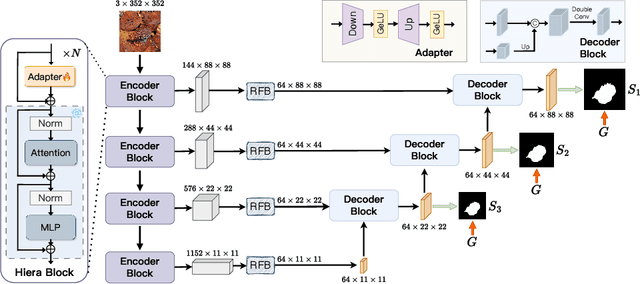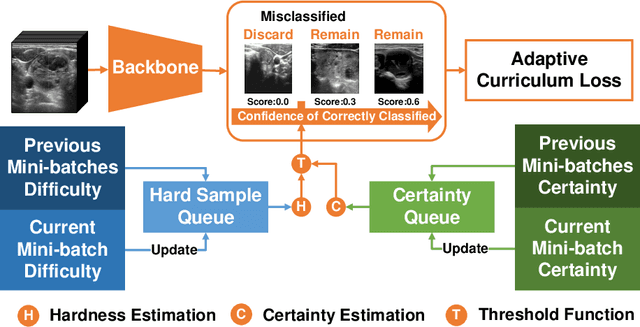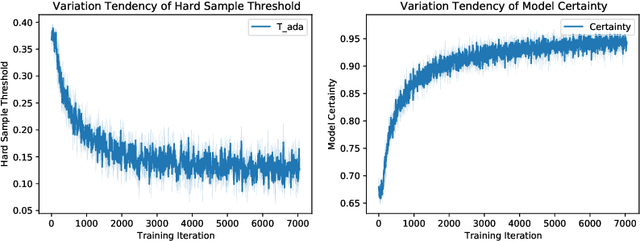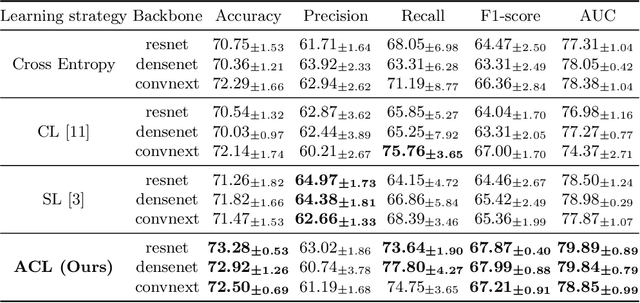Shuangyi Tan
SAM2-UNet: Segment Anything 2 Makes Strong Encoder for Natural and Medical Image Segmentation
Aug 16, 2024



Abstract:Image segmentation plays an important role in vision understanding. Recently, the emerging vision foundation models continuously achieved superior performance on various tasks. Following such success, in this paper, we prove that the Segment Anything Model 2 (SAM2) can be a strong encoder for U-shaped segmentation models. We propose a simple but effective framework, termed SAM2-UNet, for versatile image segmentation. Specifically, SAM2-UNet adopts the Hiera backbone of SAM2 as the encoder, while the decoder uses the classic U-shaped design. Additionally, adapters are inserted into the encoder to allow parameter-efficient fine-tuning. Preliminary experiments on various downstream tasks, such as camouflaged object detection, salient object detection, marine animal segmentation, mirror detection, and polyp segmentation, demonstrate that our SAM2-UNet can simply beat existing specialized state-of-the-art methods without bells and whistles. Project page: \url{https://github.com/WZH0120/SAM2-UNet}.
ArSDM: Colonoscopy Images Synthesis with Adaptive Refinement Semantic Diffusion Models
Sep 03, 2023



Abstract:Colonoscopy analysis, particularly automatic polyp segmentation and detection, is essential for assisting clinical diagnosis and treatment. However, as medical image annotation is labour- and resource-intensive, the scarcity of annotated data limits the effectiveness and generalization of existing methods. Although recent research has focused on data generation and augmentation to address this issue, the quality of the generated data remains a challenge, which limits the contribution to the performance of subsequent tasks. Inspired by the superiority of diffusion models in fitting data distributions and generating high-quality data, in this paper, we propose an Adaptive Refinement Semantic Diffusion Model (ArSDM) to generate colonoscopy images that benefit the downstream tasks. Specifically, ArSDM utilizes the ground-truth segmentation mask as a prior condition during training and adjusts the diffusion loss for each input according to the polyp/background size ratio. Furthermore, ArSDM incorporates a pre-trained segmentation model to refine the training process by reducing the difference between the ground-truth mask and the prediction mask. Extensive experiments on segmentation and detection tasks demonstrate the generated data by ArSDM could significantly boost the performance of baseline methods.
Less is More: Adaptive Curriculum Learning for Thyroid Nodule Diagnosis
Jul 02, 2022



Abstract:Thyroid nodule classification aims at determining whether the nodule is benign or malignant based on a given ultrasound image. However, the label obtained by the cytological biopsy which is the golden standard in clinical medicine is not always consistent with the ultrasound imaging TI-RADS criteria. The information difference between the two causes the existing deep learning-based classification methods to be indecisive. To solve the Inconsistent Label problem, we propose an Adaptive Curriculum Learning (ACL) framework, which adaptively discovers and discards the samples with inconsistent labels. Specifically, ACL takes both hard sample and model certainty into account, and could accurately determine the threshold to distinguish the samples with Inconsistent Label. Moreover, we contribute TNCD: a Thyroid Nodule Classification Dataset to facilitate future related research on the thyroid nodules. Extensive experimental results on TNCD based on three different backbone networks not only demonstrate the superiority of our method but also prove that the less-is-more principle which strategically discards the samples with Inconsistent Label could yield performance gains. Source code and data are available at https://github.com/chenghui-666/ACL/.
 Add to Chrome
Add to Chrome Add to Firefox
Add to Firefox Add to Edge
Add to Edge